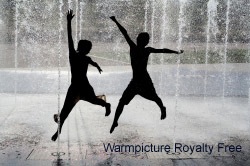Hey Viewers today S.A.Y is giving you the details about the best of Silhouette Photography. Enjoy reading it.
A great photograph is no different than any other work of art, in that it should elicit emotion and engage viewers. One of my favorite ways to engage the viewer of a photograph and encourage them to interpret the image is by utilizing silhouettes.
The photographer may have all or none of these themes in mind when creating this image. The interpretation is dictated by the individual viewer’s mindset. The viewer subconsciously projects her own hopes, fears, and mood onto the silhouette.
The reason for this is simple. Your brain is constantly working to fill in the details of what it doesn’t know. In a photo such as this, the silhouette provides a great unknown which we cannot help but interpret.
A great photograph is no different than any other work of art, in that it should elicit emotion and engage viewers. One of my favorite ways to engage the viewer of a photograph and encourage them to interpret the image is by utilizing silhouettes.
Silhouettes Engage Viewers
The reason silhouettes are so engaging is because they are so open to interpretation. Think of a silhouette of a man sitting alone on a park bench at sunset. Is he sad and lonely because his wife has passed? Is he relaxed and content? Has he finally achieved an important goal in life? Is he anxious about how much longer he will live, and whether his loved ones will be cared for? Are there religious overtones?
The reason for this is simple. Your brain is constantly working to fill in the details of what it doesn’t know. In a photo such as this, the silhouette provides a great unknown which we cannot help but interpret.
Technique for Shooting Silhouettes
Taking silhouette photos is an intermediate photography skill. The technique is a little tricky, and it will take some trial and error on your first few attempts before you become proficient.
Silhouette photography requires that we use pure back lighting. That is, we want to place our subject so that we maximize the amount of light in the scene coming from behind the subject.
As an example, let’s describe how we would best set up a shot of a silhouetted woman standing alone on a beach at sunset. Sunlight will be our only source of light, and it will be coming from behind the subject. We will not be utilizing any reflectors or fill flash.
As an example, let’s describe how we would best set up a shot of a silhouetted woman standing alone on a beach at sunset. Sunlight will be our only source of light, and it will be coming from behind the subject. We will not be utilizing any reflectors or fill flash.
Use Any Subject
Any subject can be rendered as a silhouette provided we are using back lighting. It need not be a person. A silhouette of a tree, or a child’s bike, or any strategically chosen object can add interest to a scene.




No comments:
Post a Comment